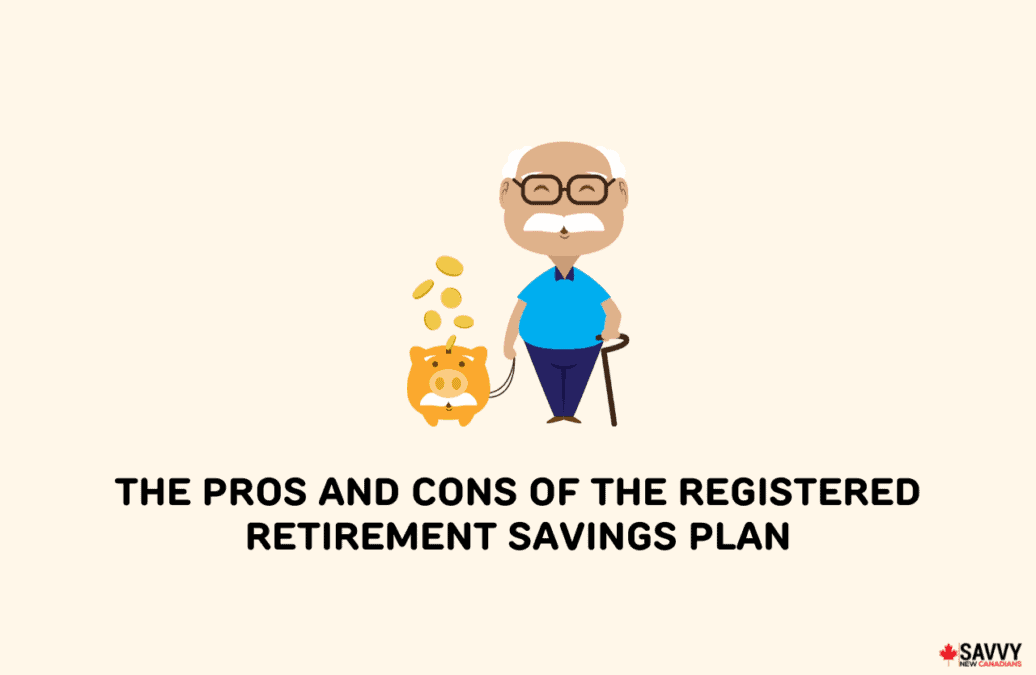The RRSP, or Registered Retirement Savings Plan, has been a staple in the Canadian financial industry since its introduction in 1957. Even with the introduction of the TFSA in 2009, RRSPs continue to be a popular way for Canadians to save and invest for their retirement.
Contributions to RRSPs are known as tax-advantaged. This means that while they remain in the account, you will not be taxed on any capital gains. These gains are tax-deferred until you withdraw those funds from the RRSP.
RRSP contributions are also tax-deductible. This means the money you contribute to your RRSP is deducted from your current year’s income tax return. This is one reason why many people use RRSP contributions as a way of artificially lowering their annual income when tax season rolls around.
Each year, Canadians get an RRSP contribution limit, which is typically about 18% of their earned income from the previous year. Any unused contribution space can be carried over to future years indefinitely until the person turns 71.
Along with TFSAs, RRSPs are a critical way for Canadians to prepare themselves for retirement. In this article, we will discuss the advantages and disadvantages of using an RRSP and whether it is worth it to use one at all.
How RRSPs Work
As their name suggests, RRSPs are registered investment accounts. This is important because registered accounts like RRSPs, TFSAs, and RESPs allow you to grow your investments tax-free. Any capital gains that are made are not taxed until you withdraw those funds from the RRSP.
You can invest in several different assets in your RRSP to grow your wealth over time. These assets include stocks, ETFs, mutual funds, bonds, GICs, cash, and even gold. You can even hold cryptocurrencies in your RRSP via crypto-based ETFs if you think Bitcoin might be a good long-term investment asset.
The whole point of an RRSP is to build those investments until you retire or hit the age of 71. This is the cut-off age for contributing to your RRSP. From this point on, your RRSP funds must be transferred to an RRIF or Registered Retirement Investment Fund, placed into an annuity, or cashed out completely.
RRSPs provide tax relief during your highest-earning years and defer those taxes to when your income is likely going to be lower in retirement.
Advantages of RRSPs
1. RRSPs are Tax Friendly
If you didn’t already realize it, one of the best benefits of investing in an RRSP is tax relief. Not only do you reduce your income for the current year’s income taxes, but you can grow your retirement nest egg tax-free.
In a non-registered account, you will pay taxes on all of your capital gains each year, whether it is for retirement or not.
2. You Can Roll Over Unused Contributions
Are you feeling the pinch this year and unable to contribute as much as you would like to your RRSP? Luckily, you can roll over any unused contributions indefinitely so you can make up for a lost year in the future.
3. You Can Make a Tax-Free Withdrawal to Buy a Home
A benefit of the RRSP that is not often utilized by Canadians is to withdraw from your investments to buy your first house. This falls under the first-time Home Buyers’ Plan, where you can withdraw up to $35,000 tax-free to put toward the purchase of a house. You will have to repay this amount to your RRSP within 15 years.
Another option is to withdraw from your RRSP to fund a return to school. Under the Lifelong Learning Plan, you can withdraw up to $10,000 per year to put toward educational costs. This money does need to be paid back to your RRSP within ten (10) years.
4. Spouses Can Split Income in Retirement
When there is a wide gap in earnings between spouses, the higher-earning partner can contribute to a spousal RRSP in their partner’s name. This allows them to lower the family’s overall tax burden in retirement.

Disadvantages of RRSPs
1. Contributions are Limited
Even though the contribution limits might be high enough for most Canadians, it is still a limit on how much we can put towards our retirement. The contribution limits are also based on how much income you earn. Lower-income earners will not be able to contribute as much as high-income earners.
2. Withdrawals Are Heavily Taxed
While RRSPs are known for being tax friendly, there is another side to tax implications with the plan. If you withdraw early, you will pay a withholding tax rate. Anything withdrawn over $15,000 is subject to a tax rate of 30%.
3. RRSP Withdrawals Can Impact Government Benefits
Any withdrawals from your RRSP can affect how much you receive from the government for Old Age Security (OAS) or Guaranteed Income Supplement (GIS). RRSP withdrawals are counted as income for benefits like the GIS and can result in a significant clawback rate, which impacts how much you receive in government support.
Are RRSPs Worth It?
For most Canadians, the benefits of the RRSP far outweigh the disadvantages. If you regularly contribute to your RRSP while you work, you should come out ahead in retirement.
Keep in mind that if you do not need the tax break on your income tax return, you might be better off maximizing your TFSA contributions before turning to your RRSP.
Another thing to consider is if your company has a substantial pension. In this case, you might rely less on your RRSP and opt to contribute more to your TFSA instead. Consider speaking to a financial planner if you want financial advice for your RRSP and retirement.
FAQs
Yes! But you don’t have to, or at least not as much as people who do not have a pension. A pension is a nice cushion to have in retirement. In this case, you are likely better off maxing out your TFSA contributions before focusing heavily on an RRSP.
RRSPs do not make as much sense for people or families who earn a lower income. The tax break from RRSP contributions does not help as much in this case, and your contributions will be lower as they are a percentage of your earned income. In this case, you are better off focusing on and maximizing your TFSA contributions instead.
While RRSPs are always beneficial to Canadians, they are less impactful for those who earn a low income from a tax-efficiency perspective. If you have already maxed out your TFSA, it makes sense to contribute to an RRSP as well.
In terms of flexibility and low-cost investing, TFSAs are more cost-effective for investors. For those who make a higher income, RRSPs will allow higher contributions and better tax breaks for income tax returns.
If you invest in risky stocks or other assets in your RRSP, you risk losing money. Remember that no investment is guaranteed when it comes to the stock market. If you know your risk tolerance is low or your time horizon is short, consider investing in lower-risk or guaranteed-return assets like GICs.
In general, taking out a loan to invest is usually not the best idea. There are times when leverage can be beneficial, like investing in real estate. Even if the math adds up over the long term, an RRSP loan does not make sense in a high-interest rate environment. You also run the risk of your investments losing money in your RRSP, which puts you at even more of a financial disadvantage.
Related: Is There an OAS Death Benefit?



